How Does Bitcoin Work? BTC Mining and Transactions | Gemini
Bitcoin is a revolutionary asset class where value is represented not as a physical or digital object, but as a record of ownership on the Bitcoin blockchain.
You may have heard bitcoin being called “digital gold” or “cash for the internet” but those descriptions don’t really tell you much about it. If you want to know what bitcoin really is and how it works, you’ve come to the right place.
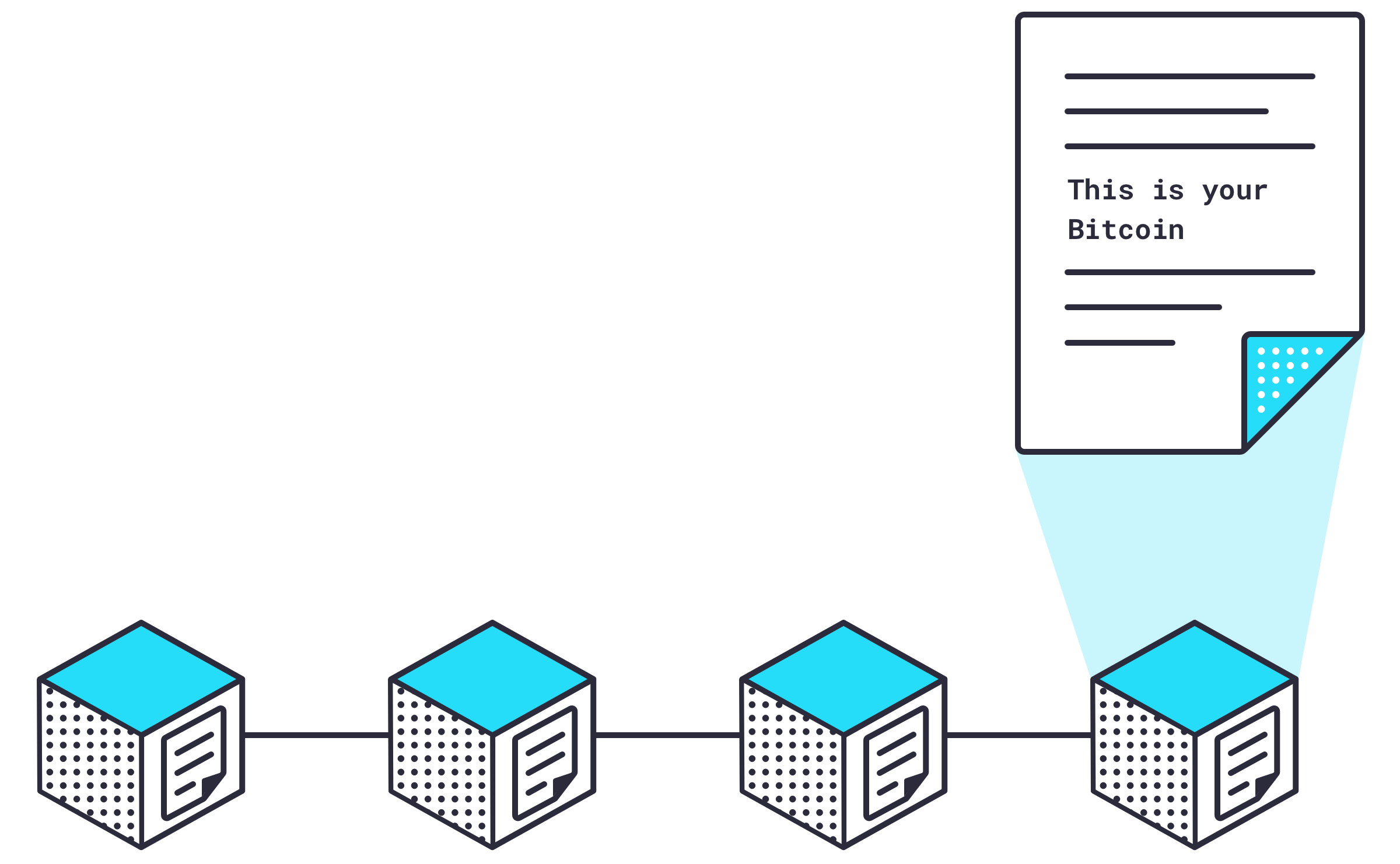
Understanding Bitcoin
Bitcoin is not a physical or digital object. Rather, bitcoin (BTC) is a representation of value in the form of a record of ownership on the Bitcoin blockchain. While this may sound totally foreign to you, by the time you scroll down this page you will understand what bitcoin really is and how it works.
To understand bitcoin the record of ownership you must first understand Bitcoin the network, which is comprised of three things:
-
the Bitcoin blockchain,
-
bitcoin transactions, and
-
the entities that verify and secure transactions.
The Bitcoin blockchain is simply a public record that has some very unique attributes that makes it incredibly secure and trustworthy. This public record exists on tens of thousands of computers around the world simultaneously, called nodes, and is updated in real time. No one person or business controls these nodes, making Bitcoin decentralized.
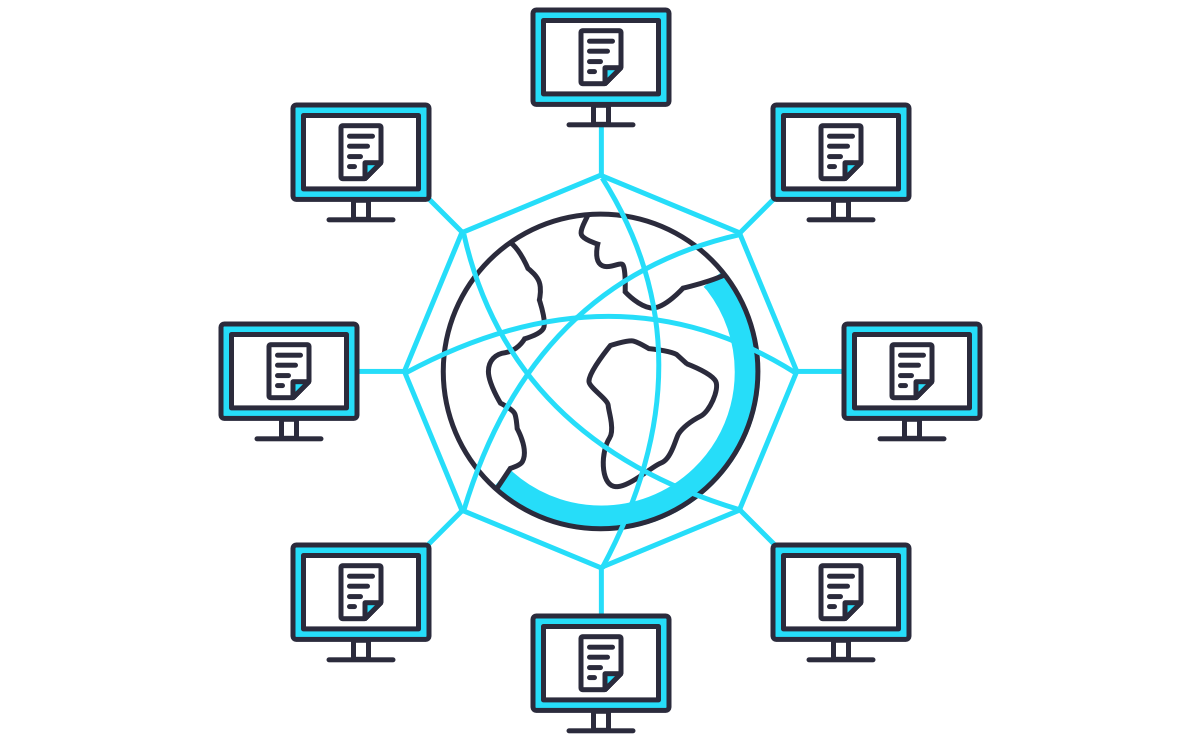
Bitcoin transactions are just like every other financial transaction you’re already familiar with: a transfer of value (e.g. dollars, real estate) from one person to another. But, instead of routing that transaction through a bank or other financial services provider, it’s validated, recorded and secured directly on the blockchain by all the nodes in the Bitcoin network. This process makes transactions on the Bitcoin blockchain secure and verifiable.
Bitcoin Nodes Decentralize the Network
Every bitcoin transaction is broadcast by the node where the transaction originated to all the nodes in the Bitcoin network. These nodes make sure that the transaction is valid, meaning they scan the entire blockchain to confirm that the person sending money indeed has that money and is authorized to send it. If those two conditions are met the transaction is deemed valid.
Remember that Bitcoin is decentralized, which means that thousands of Bitcoin nodes in aggregate have to agree that a transaction is valid. Even if a few bad actors validated a transaction falsely, thousands of other nodes would not, and the transaction would not be confirmed. This makes the probability that a valid transaction is recorded extremely high and the probability that a false transaction is recorded extremely low — making Bitcoin incredibly safe and secure to use.
Every 10 minutes or so, all the latest valid transactions are organized into a block of data which is then sent out to the entire network to be secured in the blockchain.
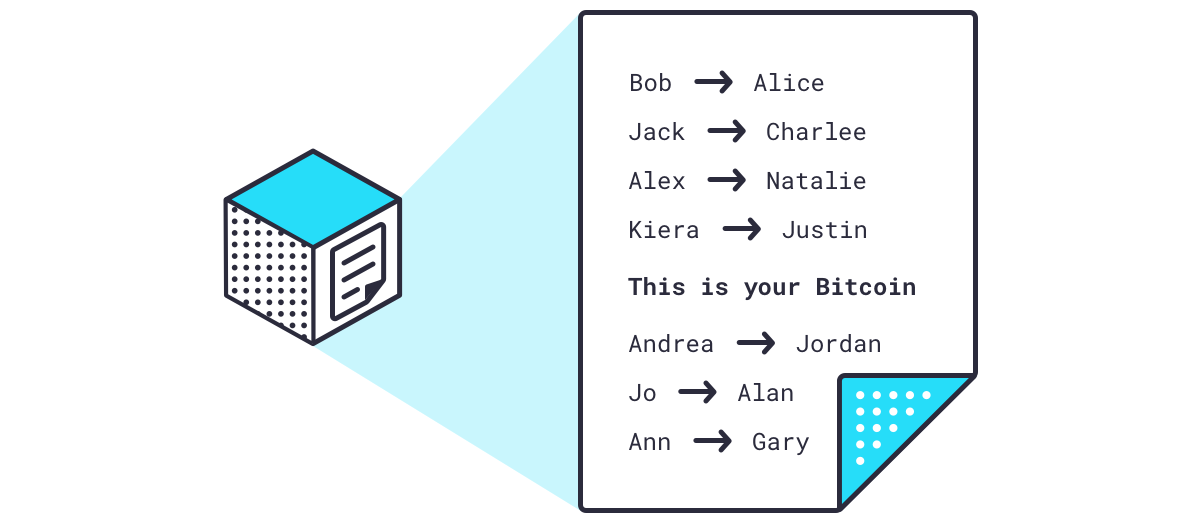
So, let’s do a quick recap before we continue and explain how blocks of transactions are sealed, secured, and added to the blockchain.
-
Bitcoin transactions are broadcast to all Bitcoin nodes.
-
Transactions are validated and agreed upon by the network.
-
All valid transactions are organized into a block of data approximately every 10 minutes.
-
The unsecured block of data is sent out to the entire Bitcoin network to be added to the Bitcoin blockchain.
With us so far? Good. Now, on to the blockchain.
How Do Miners Verify Bitcoin Transactions?
A special subset of nodes called miners take unsecured blocks of data and do a couple of things to secure that block in the Bitcoin blockchain.
First they take every transaction in the block and run it through an algorithm that takes each transaction and creates a unique identifying signature of 64 letters and numbers called a hash.
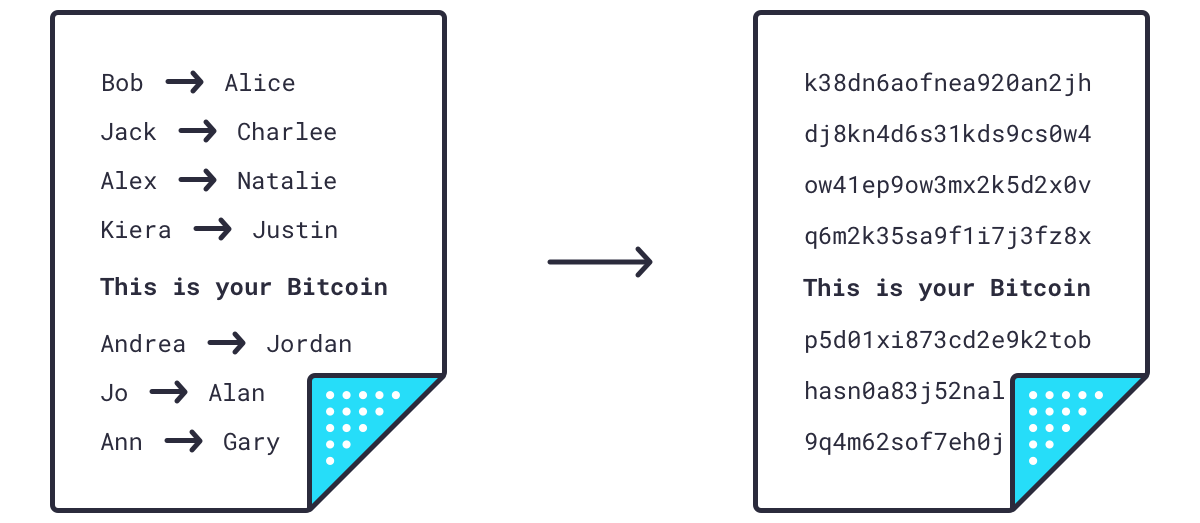
So now we have a block of transactions that have been compressed into hashes. They are then compressed further by pairing hashes together and creating a new hash for the pair. This is done until the entire block of transactions is represented by a single hash.
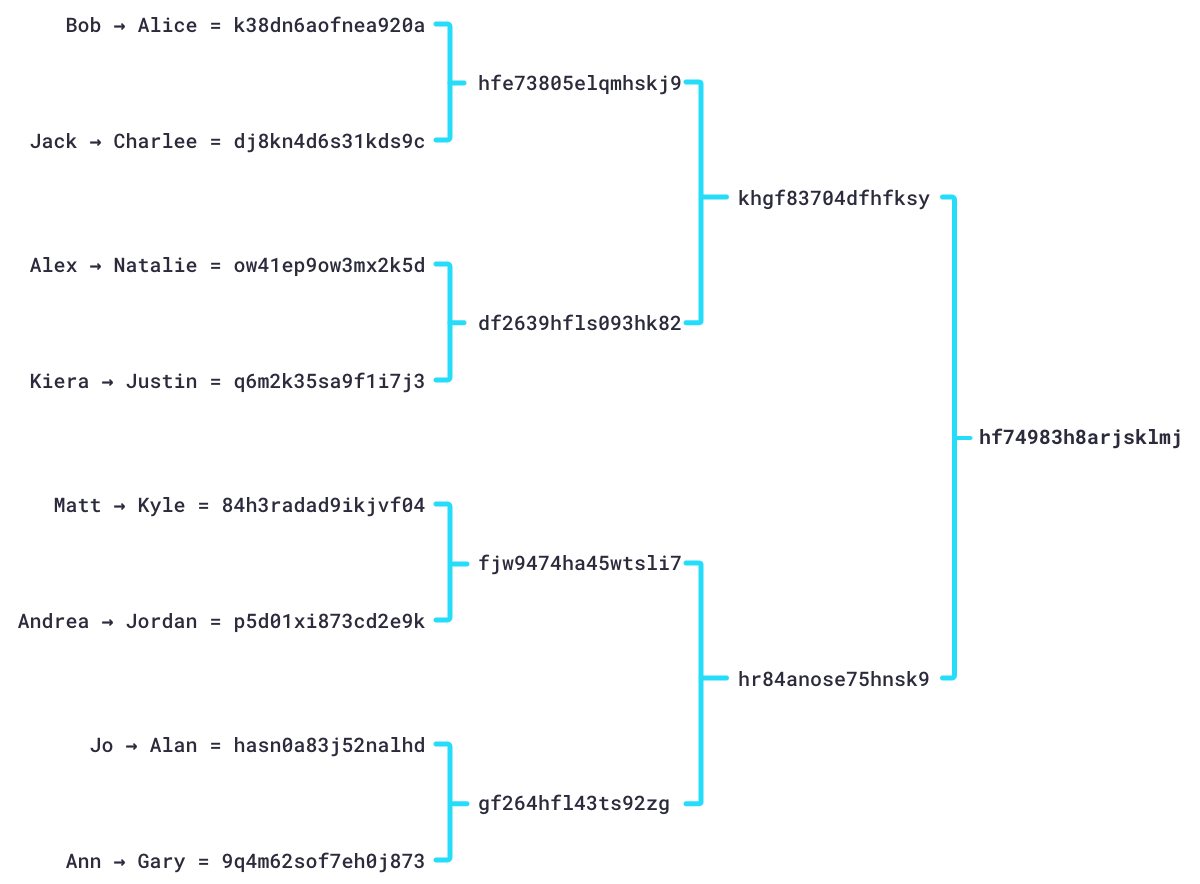
Then, the hash from the previous block is added to the block.
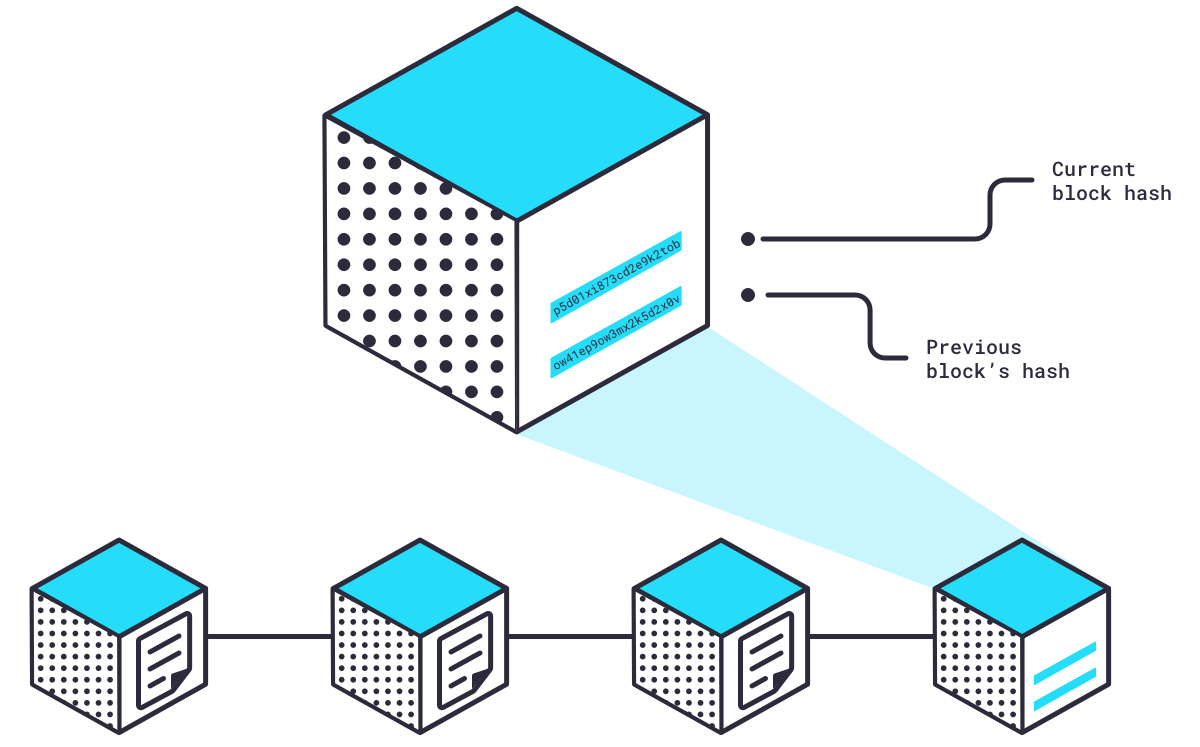
So now our block has the hash that represents all the current transactions in the block and the hash that represents all the transactions from the previous block. This is how the “chain” in “blockchain” is formed. If a single byte of data from any previous block were to change, it would invalidate all future blocks because every single hash going forward would change and break the blockchain.
The final piece of the block is a random number called a nonce, and this is where the miners really get to work.
The nonce and the two hashes in the block together need to create a hash that meets a certain set of criteria established by the software that powers the Bitcoin network. The only way to find a valid hash is by trying random nonce numbers until the hash criteria is met.
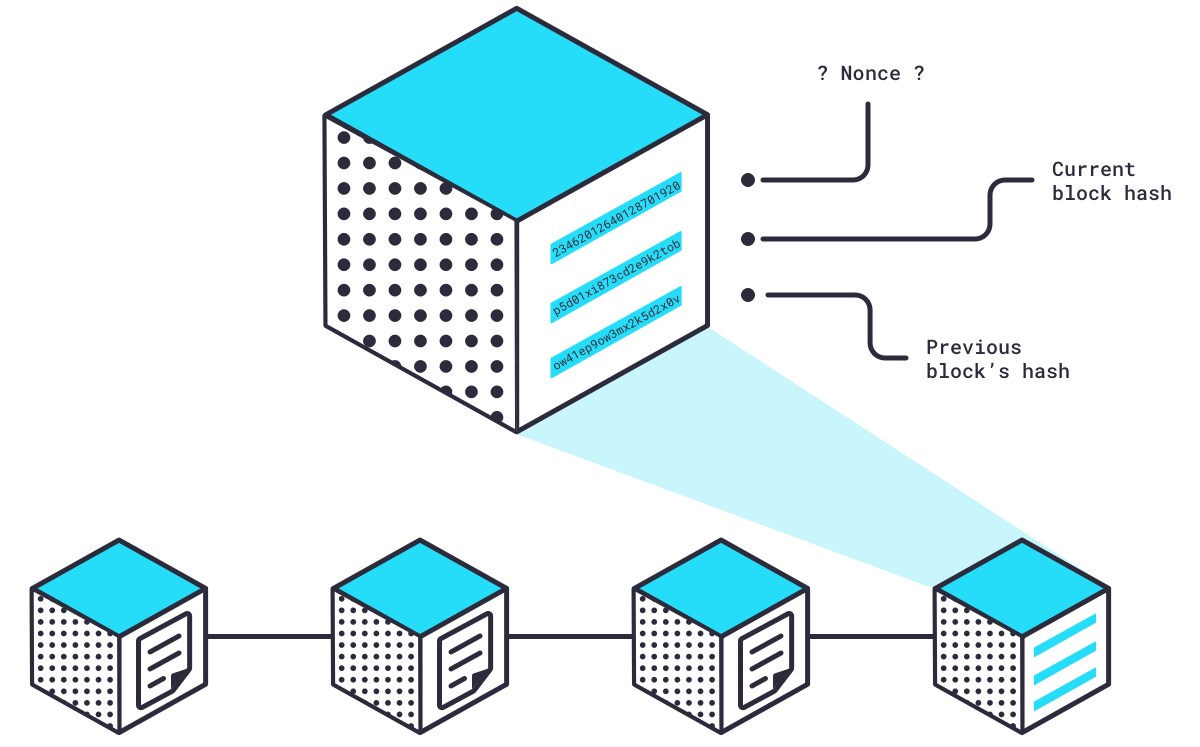
Bitcoin Mining Rewards Power Blockchain Security
Miners buy or build special computers, develop algorithms, and spend a lot of time and energy in the form of electricity to find the nonce that meets this criteria. The first miner to find the nonce and create the hash that meets the criteria broadcasts the hash to the entire network.
While creating the block’s hash is very difficult, checking that it meets the criteria is very simple. Nodes verify that the block’s hash meets the criteria, then add that block to their copy of the blockchain.
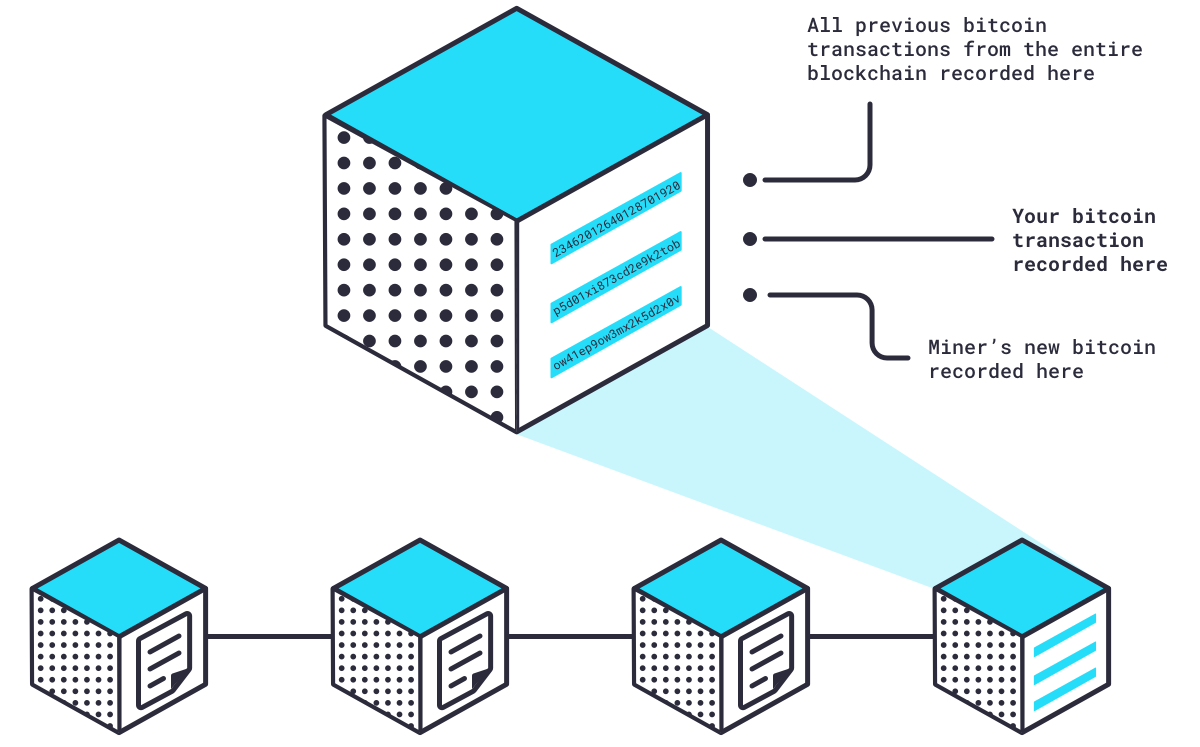
Remember, every Bitcoin full node keeps a copy of the entire blockchain, so the only way an invalid block can be added to the blockchain is if 51% of all nodes agree to its addition. While this is possible, it’s highly improbable, demonstrating another way that decentralization ensures a secure and accurate record of transactions on the blockchain. Valid blocks are added to copies of the blockchain all over the world and Bitcoin miners begin working on the next block.
In exchange for their effort, which is called Proof of Work (PoW), miners are rewarded with new bitcoin. This is the only way bitcoin is created.
So, another quick recap.
-
Transactions are turned into multiple hashes.
-
Those hashes are turned into a single hash.
-
That hash is combined with the hash from the previous block.
-
Those two hashes are combined with a nonce to create a unique hash for the new block.
-
The new block’s hash is verified by the network, added to all copies of the blockchain, and miners get paid in bitcoin.
The way that miners get their bitcoin is every mining team adds a transaction to the block in their node that states that they receive the pre-determined bitcoin for successfully mining that block. The team that actually does it, gets the bitcoin because their block is added to their copy of the blockchain, and subsequently all copies of the blockchain across the world. All other mining teams’ blocks are discarded.
So, now you can understand that decentralization and cryptography are the mechanisms by which security of data and trust in the Bitcoin blockchain is established and reinforced. And, that bitcoin is simply a representation of value in the form of a record of ownership on the Bitcoin blockchain.











